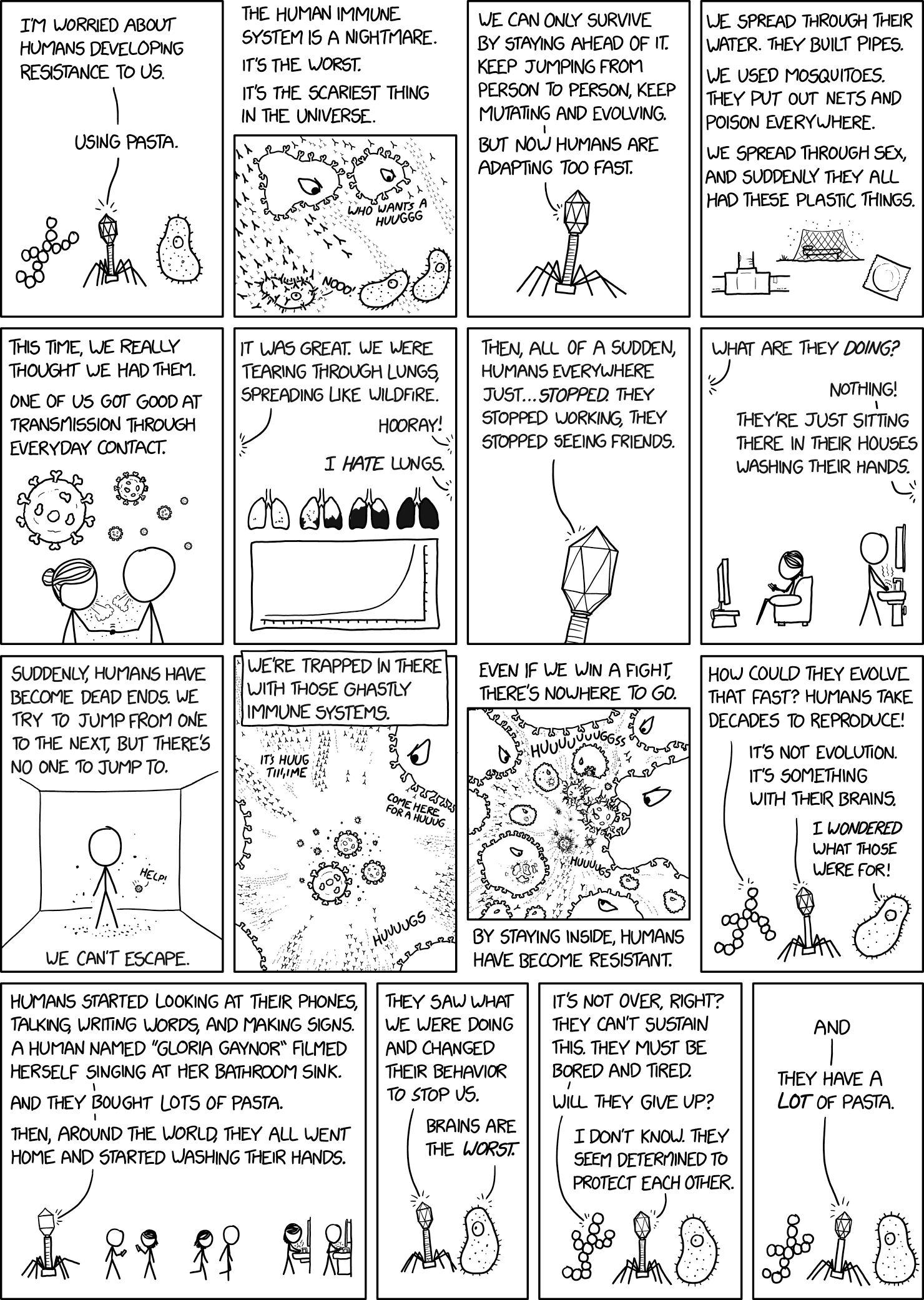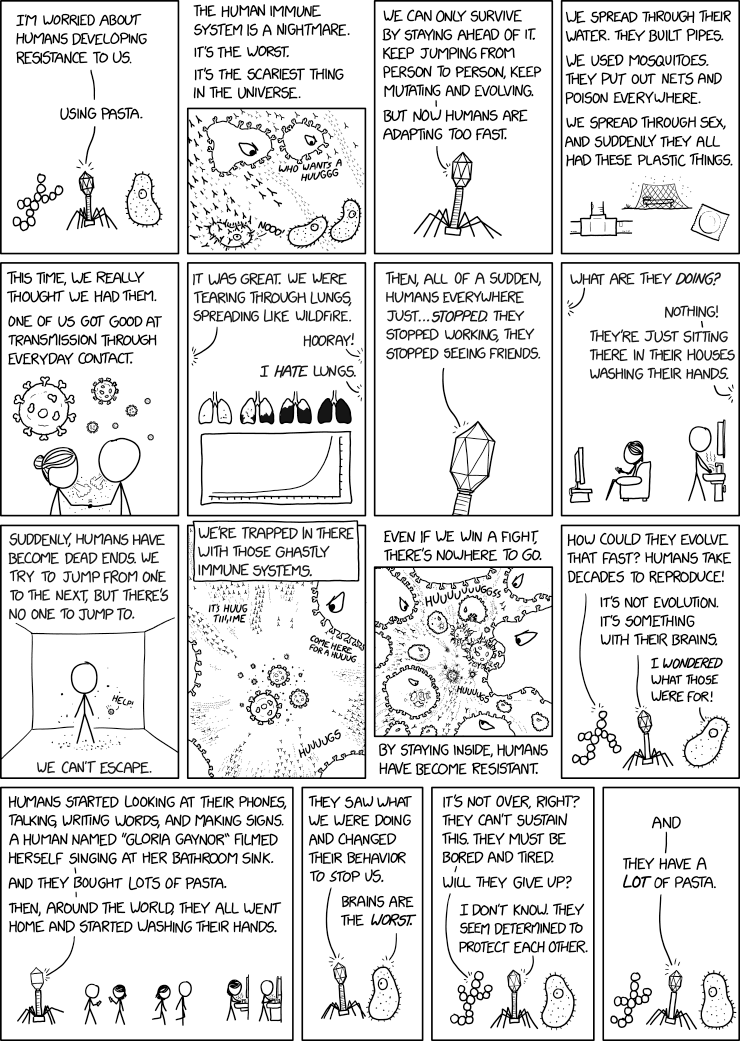If you have 1$ at-home tests that take an hour, and a 75% effective contact-tracing plus modest social distancing, you can wipe this thing out in a month or two.
Really.
It has an R0 of 3ish. Modest social distancing at least halves that, down to 1.5. 75% effective contact tracing means only 0.375 people are infected and untraced for each infected person. Cheap at-home tests means that even asymptomatic get detected.
Suppose this means that every 3.5 days, 0.5 people are infected for every infected person. And you start with 100 million cases.
Every week, 4 times fewer people are newly infected. 14 weeks to 0 people newly infected.
And it gets better, because when you are down to a few 1000, the contact tracing apparatus won't be disassembled and scale down; instead, it will go into overdrive. Going from 100 million to 10 thousand took the first 7 weeks; so if your contact tracing and isolation doubles in effectiveness with nobody around, it only takes 3.5 weeks to choke off that last 10,000.
Doing this in one region becomes one challenge, but quite doable.
Then you have to do it elsewhere. You have to restrict travel and test travelers, monitor for new outbreaks from irregular travel, and export the tools and techniques to wipe it out elsewhere.
---
As an aside, there are comments about "diseases don't have high mortality and transmissiblility". That is the anthropic principle in action.
Diseases on non-extinct species don't have high mortality and transmissiblility. We have cases of small populations of animals having 90%+ of their species wiped out by a disease.
In the case of a widespread animal, the disease needs high transmissibility, long latency and high lethality, because otherwise local animal populations die out, and then so does the disease (unless it has a carrier it doesn't kill; this is the domestic cat:songbird problem -- we are carriers for the domestic cat who doesn't get killed by it, so cat population can stay high despite songbirds becoming more rare).
Humans have bypassed that "long latency" requirement because of how much we travel. A disease with a 20 day infection to death, high transmissibility, and high lethality, could wipe out 90%+ of humans on the planet pretty reliably. The only defence we'd have is our brains (ie, change our behavior so it stops infecting us).

 xkcd.com
xkcd.com

Really.
It has an R0 of 3ish. Modest social distancing at least halves that, down to 1.5. 75% effective contact tracing means only 0.375 people are infected and untraced for each infected person. Cheap at-home tests means that even asymptomatic get detected.
Suppose this means that every 3.5 days, 0.5 people are infected for every infected person. And you start with 100 million cases.
Every week, 4 times fewer people are newly infected. 14 weeks to 0 people newly infected.
And it gets better, because when you are down to a few 1000, the contact tracing apparatus won't be disassembled and scale down; instead, it will go into overdrive. Going from 100 million to 10 thousand took the first 7 weeks; so if your contact tracing and isolation doubles in effectiveness with nobody around, it only takes 3.5 weeks to choke off that last 10,000.
Doing this in one region becomes one challenge, but quite doable.
Then you have to do it elsewhere. You have to restrict travel and test travelers, monitor for new outbreaks from irregular travel, and export the tools and techniques to wipe it out elsewhere.
---
As an aside, there are comments about "diseases don't have high mortality and transmissiblility". That is the anthropic principle in action.
Diseases on non-extinct species don't have high mortality and transmissiblility. We have cases of small populations of animals having 90%+ of their species wiped out by a disease.
In the case of a widespread animal, the disease needs high transmissibility, long latency and high lethality, because otherwise local animal populations die out, and then so does the disease (unless it has a carrier it doesn't kill; this is the domestic cat:songbird problem -- we are carriers for the domestic cat who doesn't get killed by it, so cat population can stay high despite songbirds becoming more rare).
Humans have bypassed that "long latency" requirement because of how much we travel. A disease with a 20 day infection to death, high transmissibility, and high lethality, could wipe out 90%+ of humans on the planet pretty reliably. The only defence we'd have is our brains (ie, change our behavior so it stops infecting us).

Pathogen Resistance

Last edited:




